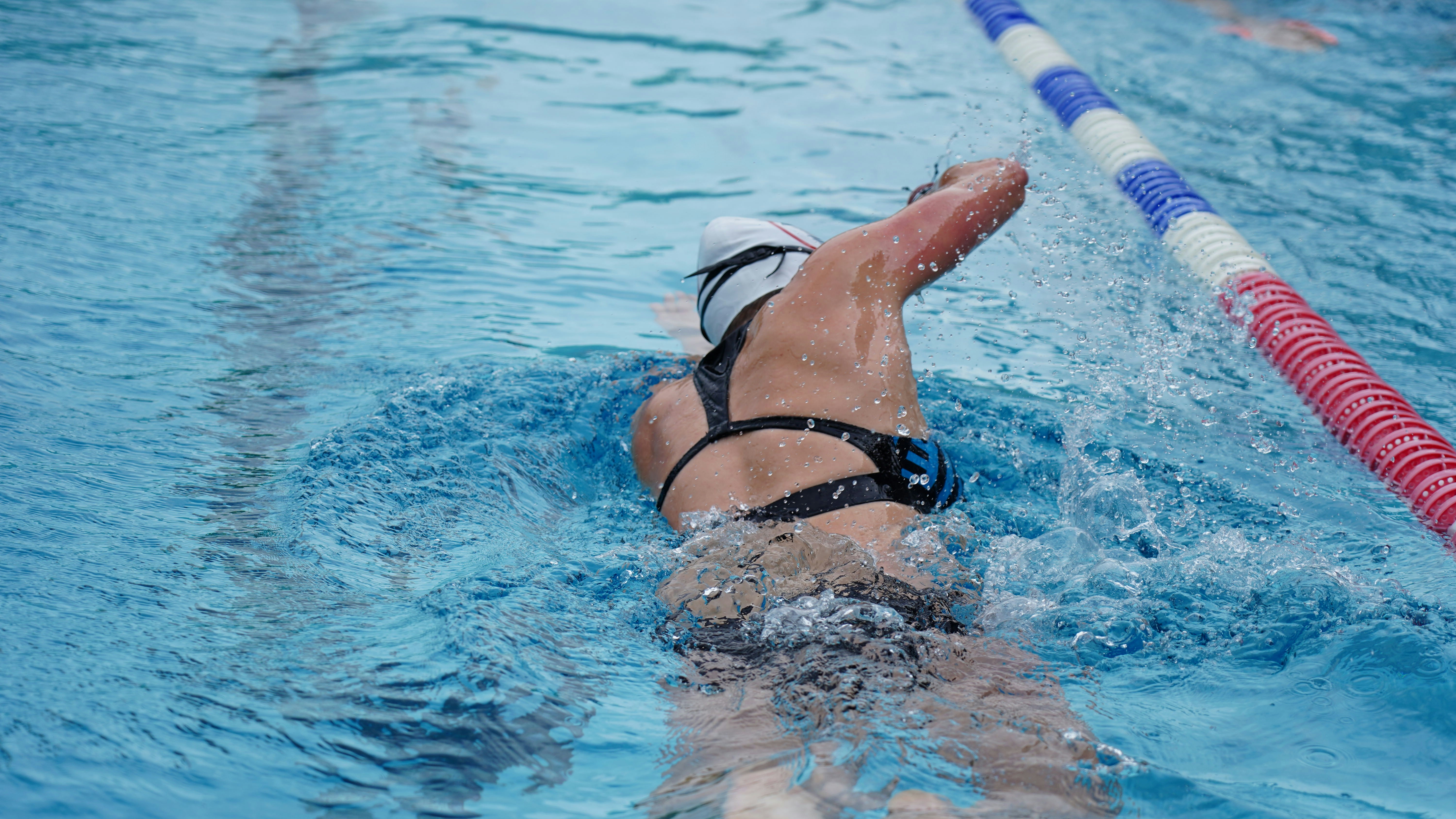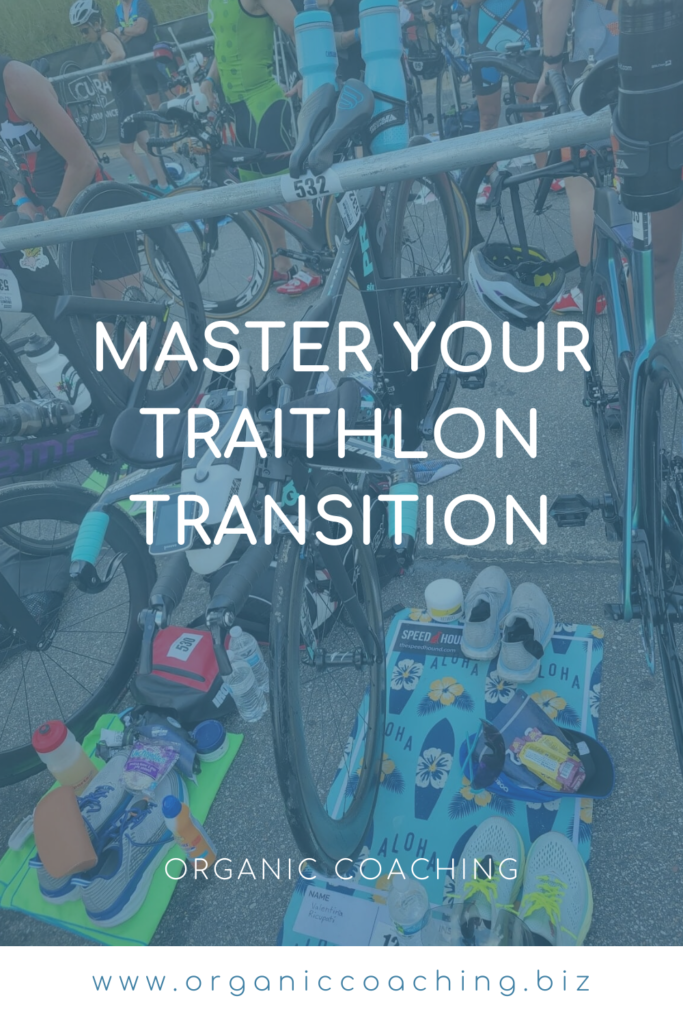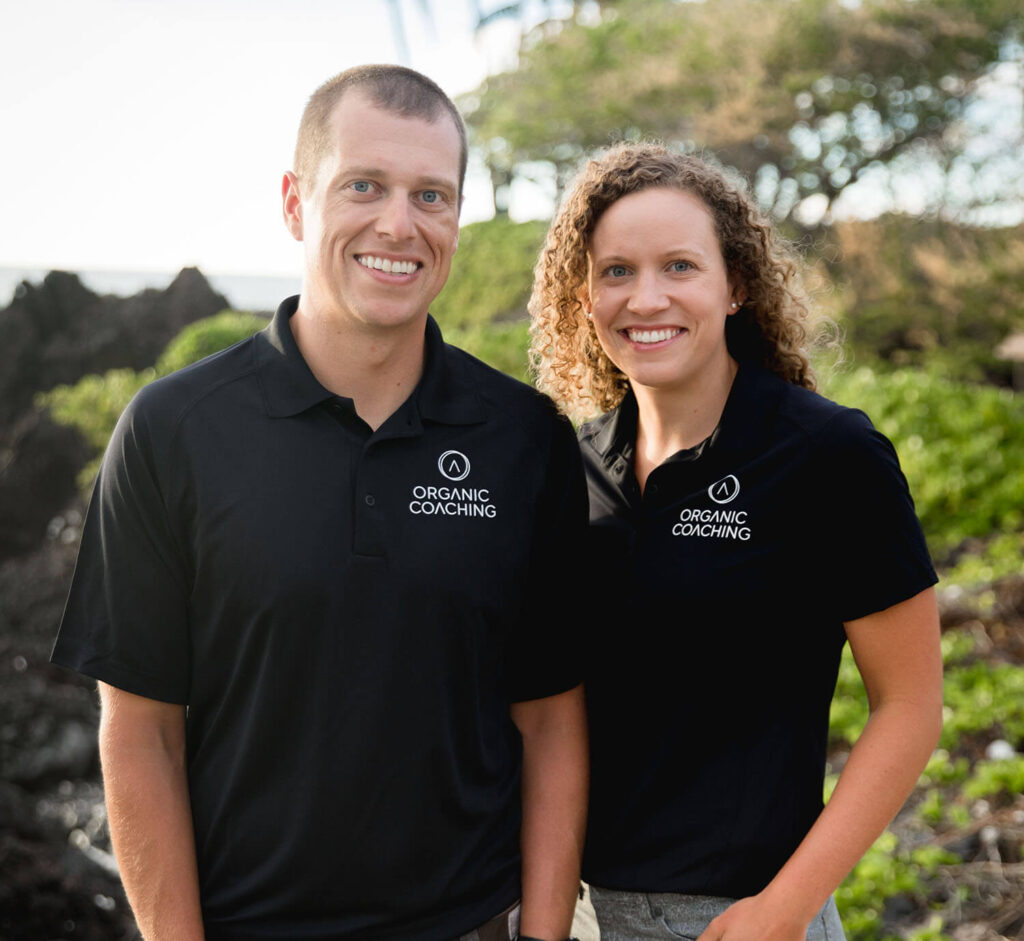

Race season is here! It is time to put all our training into action! We have been training for months on end in all three disciplines but let’s not forget another very important part of racing. The piece that holds the whole race together, is the triathlon transition.
The triathlon transition is the area in which you stage your belongings in between each discipline. It is also the act of finishing one discipline and moving on to the next. While the main emphasis of training isn’t on these, they are very important to practice as your race approaches because you can gain free time in a race. Also, it eliminates any additional stress on race day.
Transition 1 (T1) is when our bodies go from being horizontal while swimming to being vertical and spinning our legs on the bike. This triathlon transition is best to practice during an open water swim session. At the end of your session (once you are already wet), practice running out of the water, taking off the wetsuit efficiently, and running to the location where your bike is stored. Next, put the helmet and sunglasses or visor on, socks (if preferred), and shoes then grab your bike, and any nutrition, and head out of the transition area.
When leading into T1, it’s best to start kicking your legs a little more about 50-100 yards out to prepare them to ride. When exiting this T1, it is best to give yourself 10-15 minutes to allow the heart rate to settle and the body to adjust to being on the bike before consuming any nutrition and executing the plan.
Transition 2 (T2) is when our bodies go from being hunched in the aero position to being completely upright on the run. This transition is best to practice on your brick session days using the same gear you will use on race day. Lay a mat or towel next to your bike with your hat, sunglasses, race belt, nutrition, and shoes. When you are done with the long ride, time yourself to see how long it takes you to remove your bike shoes, and helmet and put the running gear on before you make it out the door.
When leading into this transition, you can start to take your feet out of your shoes ahead of time. Ride with your feet on top of the shoes to eliminate some time taking them off. Then you will be running with cycling shoes and steering the bike to your transition spot. It can feel like a balancing act at times, so it is good to practice this ahead of time.
When exiting T2, your legs are primed and will tend to want to run at a faster speed than what is sustainable for the race distance. Be aware of your pace for the first half-mile. Try to dial it back and save that energy for the end of the run.
In most races, your triathlon transition spot is predetermined by your race number. You will have an assigned spot on the bike rack. Smaller local races may give you the option to rack your bike and belongings anywhere in transition. In that case, choose the spot with the shortest distance to run with your bike (nearest to the ‘bike out’). Once you have determined your spot, familiarize yourself with the path to and from your area ahead of time. In the race, you will be running this path with a crowd of other athletes simultaneously.
Transitions for Sprint, Olympic, and even 70.3 triathlons are very similar. You have the area under your bike with all your gear in one spot. The shorter the race, the simpler the setup should be due to the duration of the race.
The Full Ironman distance transition is much different. There is a bag for your morning clothes, the bike, the run, and 2 special needs bags as well. The bike and run bags have the same contents you would have on your towel during shorter races. The special needs bags are accessible halfway through the bike and run. We recommend putting additional CO2 cartridges, tubes, any spare nutrition, and any additional gear (dry socks, raincoat, etc). Some athletes even put a little treat in there to reward themselves. Depending on the race, these bags may be on hooks or set up all together in one general area. It helps to use a colorful tape, and write the number larger with a sharpie marker. Or use some other way to make your bag stand out to make it easier to find.
An Ironman has a significant amount of gear needed so it is best to make a list and lay everything out ahead of time. This allows you to make sure that nothing is missing or that you have too much.
To eliminate even more time during triathlon transitions, advanced athletes may do flying mounts and dismounts from their bikes and/or have their shoes already on their bike attached with rubber bands.
The goal for a good transition is efficient, stress-free, and allows you to access your belongings in an organized fashion. With enough practice and race experience, a transition will become an effortless motion.
If you have any more questions, contact your coach and we can help!
Happy racing!


Carly and Tyler Guggemos built Organic Coaching in 2014 with a simple philosophy that works. The idea is to take what you have and grow it to get faster, fitter and stronger. And to do it with the time you have – not the time you wish you had.

For athletes who are ready to take their training to the next level while still thriving and succeeding in their professional and family life.
Copyright © 2024 Organic Coaching LLC